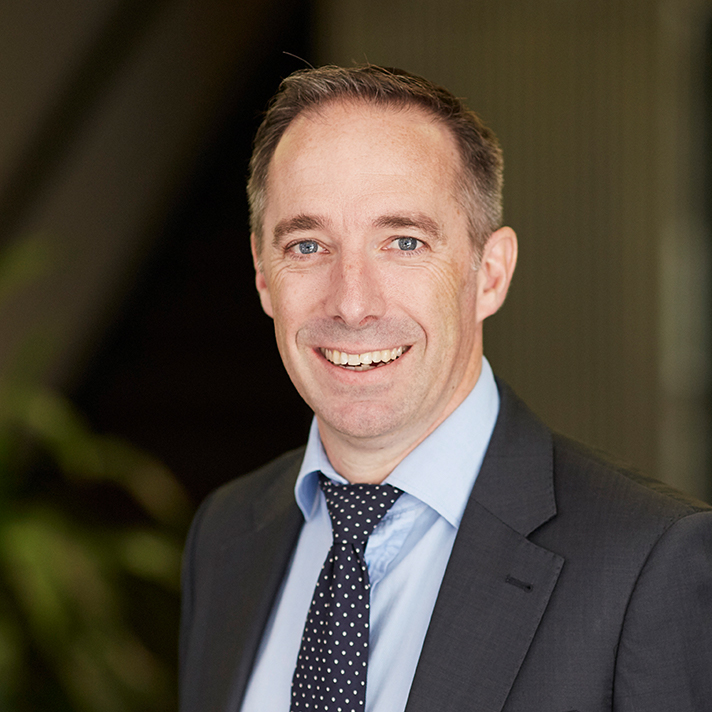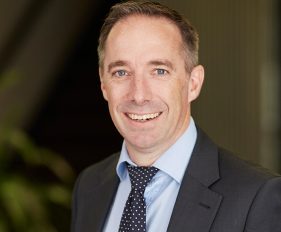Meet our grads
Stacey Lin


Studied: Bachelor of Actuarial Studies (Hons)
Joined Taylor Fry: February 2017
Location: Sydney
Home team: Government

Stacey remaining professional despite the threat of an ibis attack ...
When did you know you were ready to move from a behind-the-scenes role to dealing more directly with clients?
After about six months as an analyst, I became more aware and interested in what the client cared about, rather than being bogged down in the technical detail.
One of the principals who has been helping to mentor me here, Ash Evans, began encouraging me to take on more responsibility, step by step, creating a very safe environment and urging me to ask questions. As my responsibilities increased a bit more each quarter, I built on my progress in a structured way. I was able to do this over time on a single job with a single client, which helped enormously.
Ash guided me through, giving me feedback and, after about nine months, I felt comfortable interacting with the client. Ash knew my ability at each stage of development very well and gave me tasks suitable to my skill level along the way. He still does!
The clear sign for me that I was progressing was when I began to truly understand the client’s questions, when I began to look behind a question to find what was really being asked, even when a client occasionally asked something completely different!
How did your work change to facilitate the process?
The first thing was to start to incorporate my interest in what was important for the client into my work. Ash used a top-down approach, which was incredibly helpful, teaching me how to ask summary questions, so I could form a clear picture of the client’s objectives and goals. Thinking of the broader purpose helped guide me through the technical detail, so I wasn’t overwhelmed by it.
My main focus is always to deliver information that’s valuable and interesting to a client. It’s particularly important to translate the numbers into insights the client will find meaningful. For example, instead of saying, the frequency of a certain claim segment is going up by .2 per cent, I’ll say, this means you may see a $2 increase in the risk premium. The client’s interested in knowing the impact or consequence of the emerging trend on their business.
How did you start to develop soft skills, such as client engagement?
Ash told me to be confident. He made me think I could do it. Before you can take a step forward, you need recognition by people you respect. Their support and encouragement mean so much.
Again, it’s all about taking the client’s perspective – thinking about their goals, interests and objectives before you speak. It’s not about talking fancy – it’s simple, really – when you talk about the things they care about, then they’ll listen to you. The next step is learning how to preempt the questions a client may ask.
The most enjoyable part of consulting is trying to find the root cause of a problem and making sense of it.
The key is to keep an open mind. I like to think of it this way: it’s a relationship that involves more than a transaction between yourself and the client, and the learning goes both ways. For example, recently a client shared some ideas with us, proposing tasks that provided an interesting framework we could refine, rather than reverting to what we came up with originally. This type of collaboration is incredibly helpful and allows us to build on things that are already working for a client.

When you're pretending to work, but actually drawing giraffes
How does this contribute to enhancing your confidence?
Learning to engage with clients and seeing my progress is confirmation I’m on the right track. To me, it’s like a transition from being book smart to becoming a problem solver.
What is the most challenging aspect of consulting for you? What is the most enjoyable aspect?
Often it’s challenging to judge what’s most important to tell a client. We can get very excited with data because we’ve done a fancy trick to uncover some truth. But this may not be statistically relevant to the client’s bottom line or material enough to bring to their attention – and may inadvertently cause them unnecessary worry.
The most enjoyable part of consulting is trying to find the root cause of a problem and making sense of it. It’s great to give a client something tangible they may not have been able to navigate alone.
For example, by combining multiple government datasets, we’re able to provide new insight into why some vulnerable people require greater support than others, say due to intergenerational risk factors such as having a parent in custody, or a parent who has been the victim of domestic violence.
What sort of opportunities do you find to continue practising soft skills?
Conveying information well is such an integral part of the job, so I have lots of opportunities to practise, whether it’s needing to clearly explain a project and the insights gained to new people coming on to a job or just sharing with colleagues about interesting things we’re doing.
Client engagement is an especially big part of effective communication. I now conduct phone calls independently with clients, as well as travel interstate on my own for meetings and training with clients. I also recently co-presented with one of our principals as part of my continuing mentoring process, and I’m being trusted to contribute to writing the first drafts of proposals and reports.

If only we all looked this enthusiastic on the way to work
How are you involved in winning work, for example, contributing to proposals and pitch decks?
Keeping up to date with a project by collaborating is key. Then I try to find a gap, an idea to update the model we may be using. This happened recently, where Peter Mulquiney, the principal I was working with on the project, saw potential in my idea. He helped me develop and structure it, and encouraged me to ask the client if this was something they might want. It was a great feeling of being heard and valued. It also helped that I was presenting to a long-term client. We know them well and I was comfortable pitching ideas to them.
What’s most important in presenting compelling information to stakeholders?
It’s critical to understand what the client cares about, making sure you address what’s most important to them first. You build on this with a robust methodology and focus on transferring knowledge effectively. Beyond that, it’s a bonus if you can try preempting what a client may be interested in doing but hasn’t thought of yet themselves.
What are the pros and cons of managing people in a team?
The pro is that you’re pushed to grow faster in the role with greater responsibility for people and projects. The con is that because it’s more challenging, you’re a bit more stressed. When I’m managing a piece of work, it’s constantly on my mind. When I’m just another member of the team, I put my trust in whoever manages the job. As long as I finish what I’m meant to do, I’m carefree. It’s very different when I’m in the role of responsibility.
How involved are senior people in this transitioning process and what has been most helpful to you?
Very senior people, at principal level, have been extremely involved and played a big role in my transition, giving me valuable support along the way. Ash, Peter and Richard Brookes [another Taylor Fry principal] have been incredibly generous with their feedback, encouragement and recognition, which has been important to help me grow. Because of them, I’m not running forward like a headless chicken, directionless. It’s like finding yourself in a foreign country – they have been the street signs and directions to help me navigate the path.
Want to know more about our program? Head over to our graduate program page.
Recent articles
Recent articles
More articles

Increase in Australians with disability – new ABS survey
New data shows a significant rise in the number of people who report having a disability. We discuss the findings and offer key takeaways
Read Article

Elevated premiums and profits – what’s really going on in New Zealand?
A perfect storm may be brewing as Aotearoa community experience and insurer bottom lines collide. Ross Simmonds unpacks the issues
Read Article





